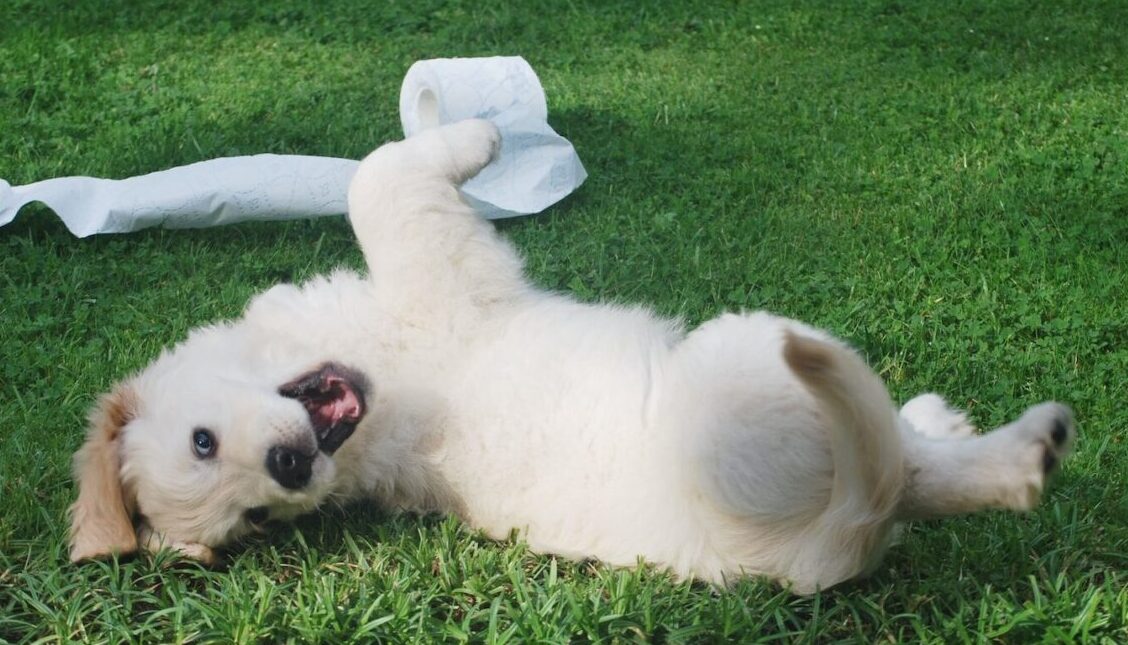Welcome to our comprehensive guide on understanding your puppy teeth chart. As a responsible pet owner, it’s important to have a good understanding of the puppy teething process, the different stages they go through, and the development of their teeth. This knowledge will help you provide the best care for your furry friend and ensure their dental health is in optimal condition. So, let’s dive in and explore the fascinating world of puppy teeth!
Key Takeaways:
- Puppy teeth chart is a helpful tool for tracking your puppy’s tooth development.
- Puppy teething stages include the eruption of baby teeth and the transition to adult teeth.
- Understanding the timeline of puppy teething can help you anticipate and manage their dental needs.
- Regular dental care, including brushing and veterinary check-ups, is crucial for maintaining your puppy’s oral health.
- Monitoring dental health and addressing any issues promptly can prevent future complications and ensure a lifetime of healthy teeth for your puppy.
The Puppy Teething Timeline
Teething is an important milestone in a puppy’s life. Understanding the timeline of the puppy teething process can help pet owners provide the necessary care and support during this time. Here is a comprehensive overview of the puppy teething timeline:
When do puppies get their adult teeth?
Puppies start getting their adult teeth around the age of 3 to 4 months. At this stage, the baby teeth will begin to fall out, making room for the permanent adult teeth to come in. The incisors are usually the first to emerge, followed by the canines and premolars. By the time a puppy is around 6 months old, their adult teeth should be fully developed.
What age do puppies lose their baby teeth?
Puppies typically start losing their baby teeth around the age of 4 to 6 months. This process can vary slightly for each puppy, but generally, the baby teeth will begin to loosen and fall out as the adult teeth push through the gums. By the age of 8 months, most puppies should have shed all of their baby teeth.
Table: Puppy Teething Timeline
| Age of Puppy | Teething Stage | Teeth In | Teeth Lost |
|---|---|---|---|
| 2-3 months | Early teething | Incisors, canines | N/A |
| 4-6 months | Active teething | Adult incisors, canines, premolars | Baby incisors, canines |
| 6-8 months | Final teething | All adult teeth | Baby premolars |
It’s important to note that while the teething timeline generally follows this pattern, individual puppies may experience slight variations. Some puppies may also go through the teething process more quickly or slowly than others. If you have any concerns about your puppy’s teething progress, it’s best to consult with a veterinarian.
Understanding the puppy teething timeline and monitoring your puppy’s progress can help ensure they have a healthy transition to adult teeth. By providing appropriate chew toys, regular dental care, and seeking veterinary guidance when needed, you can support your puppy through this important developmental stage.
Puppy Tooth Loss and Adult Tooth Emergence
As your puppy grows, you may start to notice changes in their mouth. This is a crucial phase in their development, as they begin to lose their baby teeth and their adult teeth start to emerge. Understanding the process of puppy tooth loss and adult tooth emergence is important for ensuring proper dental care and overall health for your furry friend.
Symptoms of Tooth Loss:
Knowing the signs of tooth loss in puppies can help you identify when your pup is going through this natural process. Some common symptoms include increased drooling, chewing on objects more frequently, bad breath, and even slight bleeding or swelling around the gums. These symptoms are usually temporary and should not cause major discomfort for your puppy. However, if you notice excessive pain or bleeding, it’s important to consult with your veterinarian for a proper evaluation.
Puppy Dental Care:
During the tooth loss and adult tooth emergence phase, it’s vital to prioritize dental care for your puppy. This includes regular brushing to maintain oral hygiene and prevent the buildup of plaque and tartar. Introducing a toothbrush and pet-friendly toothpaste early on can help make this a positive experience for your pup. Additionally, providing safe chew toys specifically designed for teething puppies can help alleviate discomfort and promote healthy tooth development.
| Key Steps for Puppy Dental Care | Benefits |
|---|---|
| Regular brushing with pet-friendly toothpaste | Prevents dental disease and maintains oral health |
| Providing teething toys | Relieves discomfort and promotes healthy tooth development |
| Scheduling regular veterinary check-ups | Allows for early detection of dental issues and necessary treatments |
Baby teeth provide a foundation for the proper alignment of adult teeth. Taking care of your puppy’s dental health during the tooth loss and adult tooth emergence phase sets the stage for a lifetime of good oral hygiene and overall well-being.
Remember, every puppy is unique, and the timing of tooth loss and adult tooth emergence may vary. It’s important to closely monitor your puppy’s dental development and consult with your veterinarian if you have any concerns. By providing proper dental care and attention during this phase, you can help your furry friend maintain a healthy and happy smile for years to come.

Managing Puppy Teething Pain
Teething can be a challenging time for both puppies and their owners. The discomfort and pain caused by erupting teeth can lead to behavioral changes and increased chewing tendencies. Thankfully, there are several teething remedies that can help alleviate your puppy’s discomfort and promote good oral hygiene.
Teething Remedies for Puppies
One effective way to soothe your puppy’s teething pain is by offering frozen chew toys. These can provide much-needed relief by numbing the sore gums and reducing inflammation. Simply place a few chew toys in the freezer and give them to your puppy when they’re feeling uncomfortable. Additionally, you can try using teething gels specifically designed for puppies. These gels contain natural ingredients that help soothe the gums and reduce teething pain.
Puppy Oral Hygiene
While managing teething pain is crucial, it’s equally important to prioritize your puppy’s oral hygiene. Regular brushing is essential to remove plaque and prevent tooth decay. Start by getting your puppy comfortable with having their mouth touched and gradually introduce a toothbrush and dog-friendly toothpaste. Aim to brush their teeth at least a few times a week, if not daily.
In addition to brushing, consider providing your puppy with appropriate chew toys to promote healthy oral habits. Chew toys not only satisfy your pup’s natural urge to chew but also help remove plaque and tartar buildup. Look for toys that are specifically designed for teething puppies and avoid any that are too hard, as they may damage their teeth.
| Teething Remedies | Puppy Oral Hygiene |
|---|---|
|
|
By implementing these teething remedies and prioritizing oral hygiene, you can help ease your puppy’s teething pain and ensure they have a healthy set of adult teeth. Remember to consult with your veterinarian for additional guidance and recommendations specific to your puppy’s needs.

Ensuring Healthy Adult Teeth
Proper dental care is essential for ensuring the healthy development of your puppy’s adult teeth. By following a regular dental care routine and monitoring tooth development, you can help your puppy maintain a strong and healthy smile for years to come.
Start by brushing your puppy’s teeth regularly. Use a toothbrush and toothpaste specifically designed for dogs, as human toothpaste can be harmful to them. Brushing your puppy’s teeth not only helps remove plaque and prevent tartar buildup, but it also gets them used to the sensation, making future dental care easier.
In addition to brushing, provide your puppy with safe chew toys to help promote dental health. These toys can help alleviate teething discomfort, stimulate the gums, and encourage the natural shedding of baby teeth. Be sure to choose toys that are appropriate for your puppy’s age, size, and chewing habits, and regularly inspect them for any signs of wear or damage.
| Puppy Dental Care Tips | Benefits |
|---|---|
| Regular brushing | Removes plaque and prevents tartar buildup |
| Providing safe chew toys | Promotes dental health and alleviates teething discomfort |
| Scheduling regular dental check-ups | Allows for early detection and treatment of any dental issues |
It’s also important to schedule regular dental check-ups with your veterinarian. During these check-ups, the vet can assess your puppy’s dental health, identify any issues such as retained baby teeth or misalignment, and provide necessary treatment.
By prioritizing your puppy’s dental care and monitoring their tooth development, you can help ensure they have a lifetime of healthy adult teeth. Remember to brush regularly, provide safe chew toys, and schedule regular vet check-ups for optimal dental health.
Puppy Teeth Chart and Dental Anatomy
Understanding the dental anatomy of puppies is essential for their overall health and well-being. A puppy teeth chart is a helpful tool for tracking the development of their teeth and identifying any potential dental issues. Let’s take a closer look at the different types of teeth puppies have and how a dental chart can assist in monitoring their oral health.

The Types of Teeth in a Puppy’s Mouth
A puppy’s mouth contains various types of teeth, each with its own function. These include:
- Incisors: These are the small, sharp teeth located at the front of a puppy’s mouth. They are used for picking up and grooming objects.
- Canines: Often referred to as “fangs,” canines are the long, pointed teeth found on either side of the incisors. They are used for gripping and tearing food.
- Premolars: Premolars are located behind the canines and are used for crushing and grinding food.
- Molars: Molars are the largest teeth in a puppy’s mouth and are located at the back. They are used for grinding and chewing food.
A puppy teeth chart visually represents the different types of teeth and their position in the mouth, providing a comprehensive overview of their dental anatomy.
Quote: “A puppy teeth chart is a valuable resource for pet owners and veterinarians to monitor the development of a puppy’s teeth and detect any potential dental issues early on.” – Dr. Sarah Thompson, DVM
The Importance of a Dental Chart for Dogs
A dental chart for dogs serves as a visual record of a puppy’s teeth, allowing for easy reference and monitoring. It helps in identifying any abnormalities or concerns that may arise during the teething process. By comparing a puppy’s teeth to the dental chart, pet owners and veterinarians can assess their dental health and take appropriate action if necessary.
Regularly updating the chart as a puppy grows helps track the progression of tooth development and ensures that all baby teeth are lost and replaced by adult teeth. Early detection of dental issues, such as retained baby teeth or misalignment, can prevent complications and promote good oral health in puppies.
| Type of Teeth | Number of Teeth |
|---|---|
| Incisors | 12 (6 in the upper jaw, 6 in the lower jaw) |
| Canines | 8 (4 in the upper jaw, 4 in the lower jaw) |
| Premolars | 8 (4 in the upper jaw, 4 in the lower jaw) |
| Molars | 12 (6 in the upper jaw, 6 in the lower jaw) |
A dental chart provides a valuable resource for pet owners and veterinarians to ensure proper dental care for puppies. By understanding the dental anatomy and using a dental chart, you can help keep your puppy’s teeth healthy and maintain their overall well-being.
Puppy Dental Formula
In order to understand the teething process in puppies, it is important to familiarize yourself with the puppy dental formula. The dental formula refers to the set of temporary teeth that puppies have before their adult teeth come in. It consists of a specific number and arrangement of teeth in a puppy’s mouth, which plays a crucial role in their overall oral health.
On average, puppies have 28 temporary teeth, which include incisors, canines, and premolars. These temporary teeth serve several functions, such as helping with biting, chewing, and maintaining the structure of the jaw. They also aid in the development of the puppy’s oral muscles and contribute to their overall facial appearance.
Understanding the puppy dental formula can help pet owners monitor their puppy’s oral health and detect any potential issues early on. It is essential to ensure that the puppy’s teeth are coming in properly and to keep an eye out for any signs of dental problems. Regular dental care, including brushing their teeth and providing appropriate chew toys, can help promote healthy tooth development and prevent issues down the line.
To further understand the puppy dental formula, refer to the table below:
| Teeth | Number | Description |
|---|---|---|
| Incisors | 12 | Front teeth used for grasping and grooming. |
| Canines | 4 | Pointed teeth used for tearing and holding onto objects. |
| Premolars | 12 | Flat teeth located behind the canines, used for chewing and grinding food. |
By understanding the puppy dental formula and providing proper dental care, you can help ensure that your puppy’s teeth develop correctly and maintain good oral health throughout their life.

Monitoring Dental Health and Dental Problems in Puppies
As a responsible pet owner, it’s important to monitor the dental health of your puppy from a young age. Regularly checking your puppy’s mouth can help you identify any dental problems early on and ensure proper oral hygiene. Here are some key tips for monitoring dental health and identifying potential issues in puppies:
Inspect Your Puppy’s Mouth
Take the time to inspect your puppy’s mouth regularly. Gently lift their lips and examine their teeth and gums. Look for signs of decay, discoloration, inflammation, or other abnormalities. Healthy puppy teeth should be clean, white, and free from tartar buildup.
Pay attention to their breath as well, as bad breath can be a sign of dental issues or underlying health problems. If you notice any concerning changes, consult your veterinarian for further evaluation.
Watch for Signs of Dental Problems
Puppies may exhibit certain signs if they’re experiencing dental problems. These can include reluctance to eat, difficulty chewing, excessive drooling, pawing at the mouth, swollen or bleeding gums, or visible discomfort. If you observe any of these signs, it’s crucial to seek veterinary attention promptly to address the issue.
Establish a Dental Care Routine
To maintain good dental health in your puppy, establish a regular dental care routine. This includes daily brushing with a canine toothbrush and toothpaste specifically formulated for dogs. Start gradually, allowing your puppy to become familiar with the process.
In addition to brushing, provide appropriate chew toys that promote dental health. Chew toys can help reduce plaque buildup and stimulate healthy tooth and gum growth. Consult with your veterinarian for recommendations on safe and effective chew toys for your puppy’s specific needs.
| Signs of Dental Problems in Puppies | Prevention Tips |
|---|---|
| Reluctance to eat | Establish a regular dental care routine, including daily brushing and appropriate chew toys. |
| Difficulty chewing | Monitor your puppy’s dental health and seek veterinary attention if necessary. |
| Excessive drooling | Regularly inspect your puppy’s mouth for signs of decay, inflammation, or bleeding gums. |
| Pawing at the mouth | Consult with your veterinarian for guidance on maintaining oral hygiene and addressing dental issues. |
| Swollen or bleeding gums | Provide appropriate chew toys that promote dental health and help reduce plaque buildup. |
| Visible discomfort | Seek veterinary attention promptly if you observe any signs of dental problems in your puppy. |
Conclusion
Throughout the puppy teething process, proper dental care is crucial for your furry friend’s oral health. By understanding the puppy teething timeline and following a regular dental care routine, you can help ensure healthy tooth development and prevent potential dental problems.
Remember, puppies typically start teething around 3 to 4 months of age, and their baby teeth should fall out by the time they are around 6 months old. It’s essential to monitor their tooth development during this period and seek veterinary attention if you notice any issues.
Regular brushing and dental check-ups are key components of puppy dental care. Establishing a routine early on can help your puppy become comfortable with dental hygiene practices. Additionally, providing safe chew toys and opting for teething remedies like frozen chew toys or teething gels can help manage any discomfort your puppy may experience during the teething process.
By prioritizing puppy dental care and maintaining good oral hygiene, you can support your pup’s overall health and well-being. Remember to stay consistent with dental care routines, monitor tooth development, and seek professional help if needed. With your dedication, your puppy will have a healthy and happy smile for years to come.
FAQ
What is a puppy teeth chart?
A puppy teeth chart is a visual representation of the different types of teeth that puppies have and their development stages. It helps track the growth of puppy teeth and identify any dental issues.
When do puppies start teething?
Puppies usually start teething around 3 to 4 months of age. This is when their baby teeth begin to emerge.
How many baby teeth do puppies have?
Puppies have 28 baby teeth, also known as deciduous teeth. These include incisors, canines, and premolars.
When do puppies lose their baby teeth?
Puppies start losing their baby teeth around 4 to 6 months of age. By around 6 months, most of their milk teeth should have fallen out, making way for the adult teeth.
How can I help manage puppy teething pain?
You can help alleviate puppy teething pain by offering appropriate chew toys, frozen washcloths, or teething gels. Regularly brushing their teeth and providing dental check-ups can also help maintain their oral health.
Why is dental care important for puppy teething?
Proper dental care during the teething process is essential for ensuring healthy adult teeth. Regular brushing and check-ups can prevent dental problems and monitor the development of adult teeth.
What is the role of a puppy teeth chart?
A puppy teeth chart helps track the condition of a dog’s teeth over time. It allows pet owners and veterinarians to identify any dental issues, such as retained baby teeth or misalignment, and determine appropriate treatments.
What is the puppy dental formula?
The puppy dental formula refers to the set of temporary teeth that puppies have before their adult teeth come in. It includes a specific number and types of teeth, such as incisors, canines, and premolars.
How can I monitor dental health in puppies?
You can inspect a puppy’s mouth and check their teeth for signs of decay, discoloration, or gum disease. Regular dental check-ups with a veterinarian are important for identifying and addressing any dental problems.




